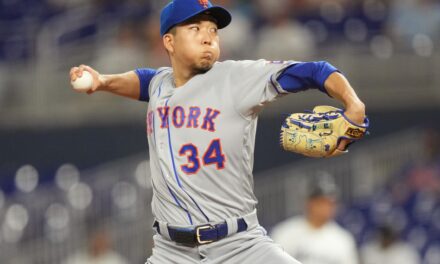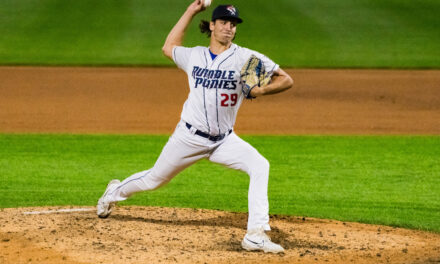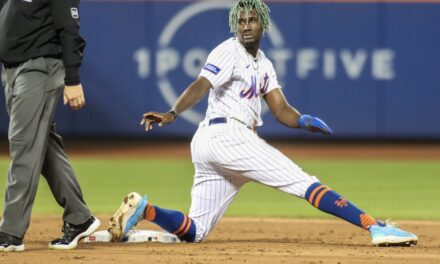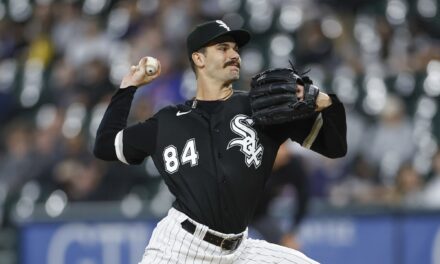I recently had the pleasure to interview former Met Art Shamsky. For those of you who don’t remember Shamsky was part of the 1969 “Miracle Mets” Be sure to check out his site ArtShamsky.com. Also if you want to read a great book about the 1969 Mets, Jets, & Knicks, Click Here.
Will Sommer: What inspired you to write your book “The Magnificent Seasons?”
Art Shamsky: Well the book is really about three special teams. I realized about 20 years after we had won that there was so much interest in the ’69 Mets. And it was a year where all three of the teams, the Jets, the Mets and the Knicks, or that period of time, all were underdogs and had never won before. If you look back in the history of New York professional sports, the Jets had never won before and the Knicks had never won a championship before and, of course, the Mets had never won one before, so I saw how people were still, 20 years later, were still coming out to see the ’69 Mets, and I realized that it was a very, very special team, and knew that the Jets and the Knicks were also very special teams and that each team had its own set of characters. Of course, the Jets had Joe Namath and were really huge underdogs, as we were; and the Knicks had an array of stars, including Willis Reed and Bill Bradley and Dave Deboucher and Dick Barnett, and Walt Frazier; and even though they weren’t as big as underdogs as we were, they were still not favored to win because they were playing in the championship against a Los Angeles Laker team that had Will Chamberlain, Jerry West, and Elgin Baylor. So it was an exciting time for New York sports.
It was a terrible time for New Yorkers and many people around the country and the world because of the war in Vietnam and a lot of things that were going on. And so I just thought it was really a book that I think people would enjoy learning about these teams and learning about how three of us were underdogs and won. And then I put it in the backdrop of what was going on in the city and the country and the world at the time, using some timeline events to show how important these teams were, particularly to New Yorkers, but people all over the country who followed the exploits of these teams and really followed them as underdogs. And then I think it really made people look at everything in perspective. If we could win, things could get better for them, too; and I think that’s really why I wanted to write it.
Will Sommer: When did you realize that all three teams were underdogs, and all three teams upset a Baltimore team at one point?
Art Shamsky: Well, we were the second team to win. The Jets won January 12, 1969, and then we had all spring and summer to see how exciting that was for them. And then when we won in October (I think we won October 16, 1969.) it was the Knicks’ turn. And quite honestly, I think even the New York Rangers had a chance to win also. I think they went to the finals that year, which would have been incredible for four teams to win; but I think after we won, the Knicks kind of didn’t feel any pressure, but I think they just saw that there was an opportunity for them because, heck, if the Jets could win and we could win, so could they. And they certainly had, of the three teams on paper, they had the best chance to win. We were really underdogs to the Baltimore Orioles, and the Jets were underdogs to the Baltimore Colts, and I think the Knicks beat the Baltimore Bullets in the quarter finals. As good as it was for New York’s sports, it was tough for Baltimore sports teams because they had lost to all of us.
Will Sommer: During the ‘69 season, Did the Mets have a sense that it wasn’t just about baseball because so many of your fans either had relatives or friends fighting in the Viet nam War – – did you have a greater sense of pride?
Art Shamsky: You know, it’s interesting, I talked to everybody who was part of those winning teams and asked them if they knew what was going on, and obviously they knew. They knew that the world was going through some really tough times. Remember now, in 1968 when the Jet season started, you had two assassinations in this country and all sorts of social unrest with the Democratic Convention in Chicago was turned into all sorts of problems and then we got into ’69 with the war in Viet Nam really going through people’s minds. And then in ’70 when the Knicks won, just to use a timeline event, I think they won in May 7 or 8, and two days before they one, or three days before they won, they had the shootings at Kent State University where five students were killed by the National Guard, and nine were injured; so it was just really difficult times, and I think… I don’t want to say “coincidence,” I think it was really something very special as after the Jets won, then we won, and the Knicks, that you had these three teams really doing some incredible things and really, if you stop and think about it. You weren’t there, but I’m sure you’ve read about all these things, but if you look at those teams when Joe Namath running off the field after they won Super Bowl 3 with his finger pointed up to the sky, and then when Cleon Jones catches the last out of the ’69 World Series and basically goes down to one knee; and then Willis Reed running on the court, game 7 against the Lakers when nobody thought he was even going to play, those are icon moments in the history of sports, particularly in New York City. So I think those three things are just symbolic of what it meant to the City of New York, and again, people in the country who followed these teams, because I know Mets fans are all over the United States. Some of the transplanted New Yorkers are moved to other places, so even back in the late sixties, so we were being followed by many people all over the country, and I just think it was a situation where… You may never see again in professional sports, where a city has three championship teams, and particularly teams that never won before.
Will Sommer: How long did it take to write your book?
Art Shamsky: I thought about it for a long time, but the actual writing of it took about a year. I spent many, many hours at the New York City Public Library doing research on events that took place in the ‘60s, late ’60s, particularly ’68, ’69, and ’70. And the interviews… I did over a hundred interviews and they were time-consuming. Basically, the interviews themselves, while they took some time, just translating them onto a computer and putting them on word-processing took a lot of time. And then picking out particular answers that I thought were prevalent to what the book was trying to do. So all in all it took about a year, but it was really a labor of love. I really enjoyed doing it and was lucky enough to have tremendous cooperation with not only the players who were on the winning teams, but players who were on some of the losing teams. And then I also interviewed politicians, newscasters, sportscasters, Viet Nam veterans, and was lucky enough to get Joe Namath and Bill Bradley and Tom Seaver to do the forwards; and I got Bob Costas, the great sports announcer, to do the intro. So I had – – And really, the great artist, LeRoy Neiman, was nice enough to let me use some of his artwork to put on the cover. So you had that combination of people involved that was really terrific for me.
Will Sommer: The Mets were a last-place team from ’62 to ’68. Did you guys have any feeling in spring training of ’69 that you would be World Series champions?
Art Shamsky: Probably, if anybody would have said that, you would have said they’re crazy based on what we had done before. I came over to the team in ’68 from the Cincinnati Reds along with some other players. Gil Hodges came over around the same time in terms of being named manager of the Mets, and although there was a nucleus of young pitchers, really it was really a team that had been known as the “Loveable Losers,” particularly from the first few years. The first year in existence in 1962, they lost 120 games. I mean it’s very hard to believe a team could lose 120 games. And I think because of that, people just expected the team to lose, and then the event that happened in subsequent years where the Mets really didn’t play well, I think fans just came out and started to – – just came out to the game to see them lose, to see them screw up and do things on the field, whether it be base-running or just trying to catch balls and stuff; and then I think really what by us winning in ’69, and in 1968 we finished in 9th place a half game out of 10th. There was only one division, then in 1969 they went to two divisions. But I think by finishing 9th, almost in last place, it made the victory in 1969 so much better. If you are unexpecting to win, and you do win, and people don’t think you can win, and you still win, that victory is so much more sweeter than it would have been if you were expected to win, and it was a different situation. But by not having played well their first seven years in existence and coming off 1968 where the team, even though they had some good young pitchers, really wasn’t considered a contender. And then to go ahead and win it all the next year, I think that victory is why that team is so special now, even 40 years later. The legacy of that team lives on forever because people appreciate what that team accomplished, and the cast of characters who made up the team.
Will Sommer: When, during the season, did you starting thinking as a team, “Hey, we have a shot of running the tables”?
Art Shamsky: I think even at this point 40 years ago in July, I don’t think we really thought we could win the Division. We were still, I think, as of August 1, nine games behind the Chicago Cubs in the National League East. And there was no wild card back then. Only the two teams from the division who won the division would play in the playoffs. So I don’t think really we started thinking about that until really the middle to the 3rd week of August when we knew we were on a roll because I think from the middle of August on, we were almost unbeatable; and as we got into September, we knew that we were playing very well and that all sorts of things are possible. Now, the thing I think that really is important here is to understand that this was a team that got help every night from a different person basically. It really was the epitome of a team victory in a sense because, if you look back on the box scores, it wasn’t just one person, although guys were having some really good years. Cleon Jones was hitting 340 and Tommie Agee was having a great year, but there was also guys like Kenny Boswell, and Ed Charles, and Wayne Garrett, and Donn Clende non, and Ed Kranepool, and Jerry Grote, and J.C. Martin, who were really contributing; myself and Ron Swoboda. It seemed like there was a different person doing something to help us win a ballgame, and I think people remember that. People remember the names of the players on that team because they were treated to different people contributing to that victory.
Will Sommer: Basically the polar opposite to this year’s team.
Art Shamsky: Well, it’s not over yet. That’s how I, you know, who knows what’ll happen. Think about baseball, and particularly the National League East this year is that basically the National League East, although the Phillies are on a roll right now, it’s not a tremendously strong division. So if you still stay within contention, there’s enough teams that you’ll be playing over the course of the year that you should be able to beat. Now whether they do that or not, that’s a different story, but if you can stay in somewhat contention, at least into September, you never know what can happen; and when the Mets get some people back healthy, that they might be able to play a little better.
Will Sommer: When people think of the 1969 Mets, they think of Seaver, Koosman. Who, in the clubhouse, was the unsung hero in 1969?
Art Shamsky: You know, that might be true what people think, but we wouldn’t have won without Cleon Jones, and we wouldn’t have won without Tommie Agee. We might not have won without Donn Clendenon. I mean, if you look at the people on that team, the players on that team, again as I said before, everybody contributed to something. But look at what Tommie Agee did that year. He led off and, I think, and hit 26 homeruns leading off, plays he made defensively in the outfield. Cleon Jones hitting 340. You look at the platoons that were out there. He platooned in right field, Gil Hodges; he platooned in first base, platooned in second base, he platooned in third base, and he platooned at times behind the plate. So you had what is that? Five positions where he was getting at least ten people in the games playing and doing things to help win. And everybody did contribute. I mean, when I wasn’t playing and Swoboda was, he was doing it. And when Clendenon wasn’t playing, and Kranepool was, they were doing it. And the same went along with Weis and Boswell at second base, and Garrett and Charles at third base, and also J.C. Martin and Grote. The thing about Grote though, he was the best defensive catcher I ever saw, great defensive catcher. So we were strong up the middle defensively, catcher, short, second, and third base, no matter who was playing. So an unsung hero, you can name a lot of guys. I mean I could go down the list and there would be, it would be 15 to 20 guys who I think were unsung heroes. But the fact remains that their names are remembered by everybody who have some memory of that 1969 championship team.
Will Sommer: And my final question is: Do you plan on attending the celebration on August 22nd?
Art Shamsky: My plans were to attend it, but I’m not sure. I had a conflict with something that I was committed to out of town, and I’m not sure I’ll be able to make it; but if I’m not there, my soul will be there and I’m hoping that’ll be a wonderful weekend, but I’m doing my best to be there.
Editors note: This was originally posted on Mets Fans Forever














